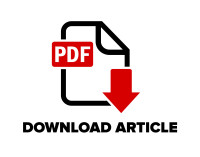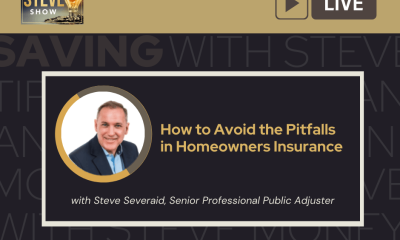CA Business Journal Profile
Business Profile: The Greenspan Co./Adjusters International
Balancing the Scales When Disaster Strikes
 Steve Severaid longs for the day he will no longer have to explain what a public adjuster does.
Steve Severaid longs for the day he will no longer have to explain what a public adjuster does.
That day is coming soon – if it hasn’t arrived already, says the Senior Vice President and Treasurer of The Greenspan Co./Adjusters International, the largest public adjusting firm in the West.
“What we do is balance the scales with the insurance company and all the experts they bring out to assess and determine damages owed,” explains Severaid, referring to public adjusters as advocates for commercial and residential policyholders. “The only way insurance policyholders get a fair shake is to level the playing field by having their own advocate.”
Severaid predicts that professional public adjusters will eventually be as well-known as attorneys, accountants, and other professionals that people regularly turn to for expertise. “In the future,” he says, “people who have suffered a fire will know that they better get a hold of a qualified public adjuster and get started right away,” as opposed to having to educate people after an event happens.
With the rise in destructive wildfires in the western United States, the need for public adjusters’ services is “increasing year over year,” he says.
Seventy-five years ago, the late Sidney Greenspan founded The Greenspan Co./Adjusters International as a family business in Los Angeles with an eye toward expanding the industry up the West Coast. Today, the company is based in San Francisco and has close to 80 employees throughout California and other Western states.
“We’re dedicated to helping property and business owners through their recovery, following insured property or business losses,” Severaid says.
Staggeringly, a full 40 percent of businesses fail to reopen after a fire or other disaster — and another 25 percent fail within one year. While there are many possible reasons for this, “it often has to do with people not having enough insurance to get them back on their feet after a disaster,” he adds. “People have to be diligent about reviewing their coverage to ensure it is adequate and ensuring their inventory is properly documented.”
Even for those with adequate insurance coverage, insurance companies are notorious for dragging homeowners and business owners through months of negotiations, making it difficult – sometimes nearly impossible – for companies to reopen. That’s exactly where the critical importance – and impact – of a public adjuster comes into play.
 “The insurance companies’ process is a devastating experience — absolutely devastating. It wears people down; not just the money, but the mental strain. It ruins relationships. The insurance companies’ approach in settlement is to do it as slowly as they can, denying business owners the ability and opportunity to re-open as they see their businesses crumble bit by bit right in front of them.” — Steve Severaid, The Greenspan Co.
“The insurance companies’ process is a devastating experience — absolutely devastating. It wears people down; not just the money, but the mental strain. It ruins relationships. The insurance companies’ approach in settlement is to do it as slowly as they can, denying business owners the ability and opportunity to re-open as they see their businesses crumble bit by bit right in front of them.” — Steve Severaid, The Greenspan Co.
Following a fire or other business interruption, business owners find themselves in the impossible position of having to choose between handling their insurance claim or maintaining customer and employee engagement. Choosing to work with a public adjuster means business owners don’t have to make this choice; they can focus on recovery while the public adjuster negotiates with the insurance company.
After a deadly fire struck a Vallejo, California retirement home in 2008, killing several residents and displacing hundreds, the business owners grappled with legal challenges. Two years later, they found themselves at an impasse with their insurance company.
“The retirement home was run through the mill for a couple of years. They were worn out. They didn’t know what to do or where to turn,” Severaid says. Luckily, they found Greenspan. The owners hired the company, which secured an additional several million over the insurance company’s initial offer, allowing the retirement home to house its elderly residents again.
Sadly, he notes, “Had we been involved from the beginning, they would have recovered more and faster – but some things were already agreed to and set in stone and could not be changed.”
Greenspan not only helps victims of single-structure fires, but also assists whole communities after wildfire-related losses. Extreme wildfires in the West have become the new normal, due to climate change and severe drought. “It’s changed the way we conduct business,” Severaid says.
The company has dealt with major wildfires four out of the last five years, and has begun providing education and resources to help people prepare for wildfire season.
“We’ve had to gear up in order to keep up the pace and make sure that we can satisfy as many people as possible when we’re in these wildfires.”
In response to the increased demand, Greenspan has created dedicated wildfire teams, ready to respond to property owners as quickly as possible to minimize the impact of wildfire damages. The company has integrated Matterport 3D technology, used in virtual home tours, to help document damage to homes, buildings, and other structures after a fire.
With this technology, Greenspan teams can work virtually with insurance companies to assess and itemize the damage. “It’s an invaluable tool,” Severaid explains.
“Business and property owners shouldn’t wait for a major disaster to strike before getting to work. There are things they can do now to start preparing for potential disaster,” he emphasizes.
- Call your insurance broker and request a walkthrough of your facility to evaluate what you have. Make sure any new equipment is included in your listed inventory — and that it’s covered by your policy. These changes often don’t significantly alter your premium, and they can make a huge impact when it’s time to collect after a disaster. Talk openly about your finances and what you’re generating in sales. Make sure the insurance package you have is appropriate for your current business operations.
- Use a phone or camera to video-document your entire building and everything in it. Save the video to the cloud or on a hard drive that is stored somewhere other than in your business because “if it burns down, it’s not going to do you any good.
- As part of your disaster preplanning, choose a public adjuster now. Explore this selection from a business perspective, just as you would with other industry professionals on whom you rely for expertise.
Homeowners are similarly advised to go through their homes and take video of everything inside – from kitchen equipment to power tools, and even the contents of drawers and closets. They should also review their policy with their agent and make sure they’re accounting for market fluctuations – like the dramatic recent increase in lumber prices– when evaluating coverage.
“We have our finger on the pulse of the communities we work with by holding town halls and panel discussions with experts and sharing important resources,” Severaid concludes. “We work with thousands of businesses, families, and communities to help them recover from disasters like earthquakes, commercial fires and wildfires, and floods and water damage. With our expertise, extensive resources, and decades of experience, we continue to set the standard for public adjusting.”
Copyright © 2021 California Business Journal. All Rights Reserved.
This article was edited and published by Rick Weinberg, California Business Journal’s Founder, Publisher and Editor-in-Chief. Click here for Rick Weinberg’s biography.
For testimonials on the impact of California Business Journal articles, click here.






